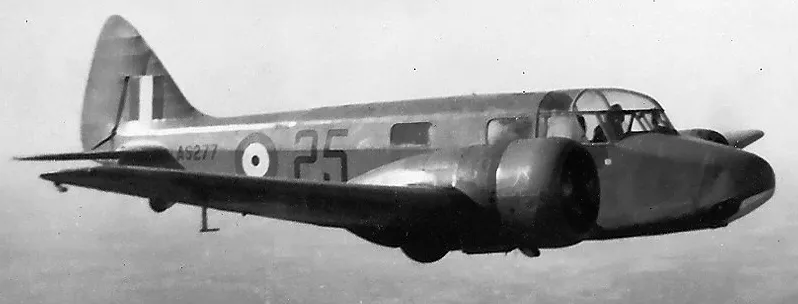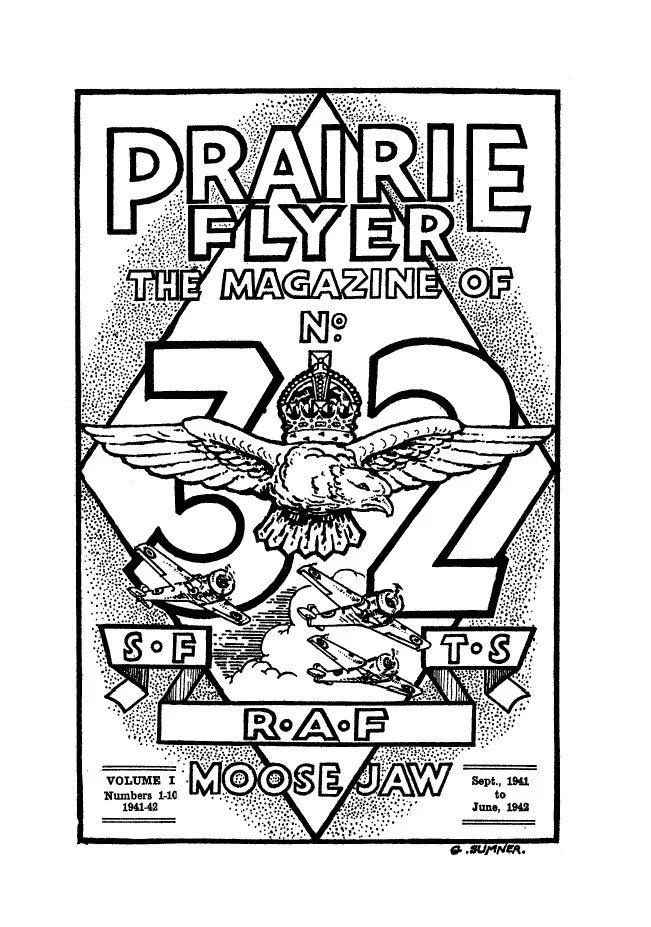Airspeed Oxford

Airspeed A.S. 10 Oxford Mk. II, RCAF (Serial No. AS277), 25, in flight over Saskatchewan, 1942.
The Airspeed AS.10 Oxford was a twin-engine monoplane aircraft developed and manufactured by Airspeed. It saw widespread use for training British Commonwealth aircrews in navigation, radio-operating, bombing and gunnery roles throughout the Second World War.
The Oxford was developed by Airspeed during the 1930s in response to a requirement for a capable trainer aircraft that conformed with Specification T.23/36, which had been issued by the British Air Ministry. Its basic design is derived from the company's earlier AS.6 Envoy, a commercial passenger aircraft. Performing its maiden flight on 19 June 1937, it was quickly put into production as part of a rapid expansion of the Royal Air Force (RAF) in anticipation of a large-scale conflict.
As a consequence of the outbreak of war, many thousands of Oxfords were ordered by Britain and its allies, including Australia, Canada, France, New Zealand, Poland, and the United States. Following the end of the conflict, the Oxford continued to achieve export sales for some time, equipping the newly formed air forces of Egypt, India, Israel, and Yugoslavia. It was considered to be a capable trainer aircraft throughout the conflict, as well as being used a general-purpose type. A large number of Oxfords have been preserved on static display. Wikipedia
CASPIR Aircraft Groups:
RCAF On Strength (821), Canadian Aircraft Losses (168)Oxford Mk. II AS229
Taken on strength at No. 1 Port Detachment at Halifax, NS. To No. 4 Training Command on 17 September 1941, for use by No. 36 Service Flying Training School at Penhold, Alberta. Winter conversion kit installed at 36 SFTS by 2 July 1942. To Aircraft Repair in Edmonton, Alberta for repairs following a Category B crash, 28 July to 2 November 1942. Back to No. 4 Training Command when completed. Category A crash on 8 July 1943.
1941-07-19 Taken on Strength Eastern Air Command 2019-08-20
1942-July-18 Accident: 36 Service Flying Training School Loc: Lacombe Names: Burrell | Harwood | Smith
1943-January-12 Accident: 32 Service Flying Training School Loc: Aerodrome Names: Hazelwood | Stanton
1943-July-08 Accident: 32 Service Flying Training School Loc: R1 Names: Blatny | Channon | Maly | Urwin
1943-08-27 Struck off Strength Struck off, reduced to spares and produce 2019-08-20
Oxford Mk. I AS625
Taken on strength at No. 2 Elementary Flying Training School at Fort William, Ontario. To No. 4 Training Command on 13 November 1941, for use by No. 37 Service Flying Training School at Calgary, Alberta. Category B damage at Calgary airport at 10:05 on 1 February 1942. To Aircraft Repair for crash repairs on 7 April 1942, noted with 127:25 logged time. Back to No. 4 Training Command on 24 June 1942. To Aircraft Repair for crash repairs again, 30 October 1942 to 8 January 1943. to storage with No. 4 Training Command when completed, issued from storage on 25 March 1943. Category A crash on 8 July 1943 1 mile north of relief field at Buttress, Saskatchewan. Collided with Oxford AS229 while both aircraft were attempting to land. A total of 4 fatalities in the two aircraft, including LAC S. Haly, a Czech student in the RAF. Application to write off from No. 4 Training Command dated 17 August 1943.
1941-11-18 Taken on Strength No. 2 Training Command 2019-08-20
1942-February-01 Accident: 37 Service Flying Training School Loc: Calgary Airport Names: Lennox
1943-July-08 Accident: 32 Service Flying Training School Loc: R1 Names: Blatny | Channon | Maly | Urwin
1943-08-27 Struck off Strength Struck off, reduced to spares and produce 2020-09-22





 Commonwealth War Graves Commission
Commonwealth War Graves Commission Find-A-Grave.com
Find-A-Grave.com Library and Archives Canada Service Files (may not exist)
Library and Archives Canada Service Files (may not exist) Rosedale Cemetery, Canada
Rosedale Cemetery, Canada
 Oxford Trainer
Oxford Trainer Wikipedia Oxford Trainer
Wikipedia Oxford Trainer Harold A Skaarup Web Page
Harold A Skaarup Web Page
 RCAF.Info - RCAF Station Moose Jaw SK
RCAF.Info - RCAF Station Moose Jaw SK